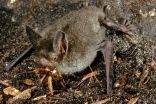Climate change may impact future tourism at some US national parks
Future visitation may decrease at US national parks warming over 80 degrees Fahrenheit
2015-06-17
(Press-News.org) Visitation at U.S. National Parks may potentially increase with increasing temperature in temperate areas, but may decrease with temperatures rising over 80 degrees Fahrenheit, according to a study using future climate and visitation modeling scenarios published June 17 in the open-access journal PLOS ONE by Nicholas Fisichelli and colleagues from U.S. National Park Service.
Climate change may affect not only natural and cultural resources within protected areas, but also park tourism. To assess the relationship between climate and park visitation, the authors of this study evaluated historical monthly mean air temperature and Park service visitation data (1979-2013) at 340 parks, ranging from Guam to Alaska, and projected potential future visitation (2041-2060) based on two warming-climate scenarios and two visitation-growth scenarios.
Of the original 340 parks assessed, over 80percent showed strong relationships between visitation and temperature. Visitation generally increased with increasing average monthly temperature, but decreased strongly with temperatures over 77 degrees Fahrenheit (25 degrees Celcius). Future visitation varied across parks, but the authors found that many high-latitude and high-elevation parks showed increases in potential visitation, especially during the spring and fall seasons. Parks with historically warm temperatures showed a potential future decrease in visitation during the hottest months, and tropical parks with small temperature variation throughout the year showed no relationship to temperature. Although very warm months at some parks may see decreases in future visitation, this potential change represents a relatively small proportion of visitation across the national park system. The authors suggest that protected areas that develop adaptation strategies for these changes may be able to both capitalize on opportunities and minimize detriment related to changing visitation.
INFORMATION:
In your coverage please use this URL to provide access to the freely available paper: http://dx.plos.org/10.1371/journal.pone.0128226
Citation: Fisichelli NA, Schuurman GW, Monahan WB, Ziesler PS (2015) Protected area tourism in a changing climate: will visitation at us national parks warm up or overheat? PLOS ONE 10(6): e0128226. doi:10.1371/journal.pone.0128226
Funding: The authors have no support or funding to report.
Competing Interests: The authors have declared that no competing interests exist.
ELSE PRESS RELEASES FROM THIS DATE:
2015-06-17
Highly specialized coronulid barnacles may be able to identify and attach to the fins of quick-swimming dolphins, locating areas suited for finding food and developing larvae, according to a study carried out as a collaboration between the University of Valencia, Spain, and the University of Southern Mississippi, and published June 17, 2015 in the open-access journal PLOS ONE by Juan Carrillo and colleagues.
Scientists have reported several types of symbiotic barnacles that settle on living host organisms. The highly specialized coronulid barnacle, Xenobalanus globicipitis, ...
2015-06-17
San Diego, June 17 -- A team of researchers led by bioengineers at the University of California, San Diego provide new insights on how hearts 'stay young' and keep functioning over a lifetime despite the fact that most organisms generate few new heart cells. Identifying key gene expression changes that promote heart function as organisms age could lead to new therapy targets that address age-related heart failure.
The researchers found that the contractile function of the hearts of fruit flies is greatly improved in flies that overexpress the protein vinculin, which also ...
2015-06-17
Sydney, Australia - Fossilised remains of a new bat species, which lived 16 million years ago, walked on four limbs and was three times larger than today's average bat, have been discovered in New Zealand.
The fossils were found near Central Otago on South Island, in sediment left over from a vast prehistoric body of water known as Lake Manuherikia, which was part of warmer subtropical rainforest during the early Miocene era, between 16 and 19-million-years-ago.
The new species, Mystacina miocenalis, was described today in the journal PLOS ONE, and is related to another ...
2015-06-17
In a finding that furthers the understanding of human immunodeficiency virus (HIV), researchers from Children's Hospital Los Angeles discovered two locations where a single difference in HIV's genetic code altered the way the virus infected the cell, thereby influencing the progression of the disease.
The results of this study will be published in PLOS ONE on June 17.
HIV targets specific white blood cells, called CD4+ T-cells, which play an important role in organizing the immune response to bacteria and viruses. By using two different receptors, CCR5 (R5) or CXCR4 ...
2015-06-17
A new study led from Karolinska Institutet in Sweden links male infertility to autoimmune prostatic inflammation. The findings are published in the journal Science Translational Medicine.
Involuntary childlessness is common, and in half of all cases attributable to infertility in the man. Although male infertility has many possible causes, it often remains unexplained.
In the present study, the researchers have discovered a reason for reduced fertility in people with autoimmune polyendocrine syndrome type 1 (APS1), which increases the risk of developing autoimmune ...
2015-06-17
BOSTON -- A new drug screening technology developed at the Harvard T.H. Chan School of Public Health has identified a new potential anti-diabetes compound--and a powerful way to quickly test whether other molecules can have a positive effect on a critical molecular pathway believed to be central to diseases ranging from diabetes to retinitis pigmentosa, cystic fibrosis, Huntington's disease, and Alzheimer's.
The study appears in the June 17, 2015 issue of Science Translational Medicine.
The compound, which the authors have called azoramide*, works by focusing on an ...
2015-06-17
Scientists at the Charité - University Medicine Berlin, Department for General, Visceral and Transplantation Surgery, led by Dr. Georg Damm (and Prof. Dr. Daniel Seehofer) have established a protocol for an uncomplicated isolation of primary human hepatocytes (PHH), Kupffer cells (KC), liver endothelial cells (LEC), and human Stellate cells (HSC) from human donor tissue. Liver cells were isolated from the tissue using a two-step EDTA/collagenase perfusion technique, followed by a separation of PHH and different non-parenchymal cell (NPC) fractions through Percoll density ...
2015-06-17
This Week From AGU: Gender parity in the geosciences, Tibetan Plateau formation
From eos.org: Working Toward Gender Parity in the Geosciences
How are women represented in the geosciences? The author of a new AGU book, Women in the Geosciences: Practical, Positive Practices Toward Parity, answers some questions.
From AGU's journals: Dynamics of the Earth's Surface in the Eastern Tibetan Plateau
The evolution of mountains is written in the histories of the rocks that make up their ranges. Scientists have long used areas where rivers cut deep incisions in rock ...
2015-06-17
Scientists at The University of Manchester have made an important discovery that forms the basis for the development of new applications in biofuels and the sustainable manufacturing of chemicals.
Based at the Manchester Institute of Biotechnology (MIB), researchers have identified the exact mechanism and structure of two key enzymes isolated from yeast moulds that together provide a new, cleaner route to the production of hydrocarbons.
Published in Nature, the research offers the possibility of replacing the need for oil in current industrial processes with a greener ...
2015-06-17
The moon is engulfed in a permanent but lopsided dust cloud that increases in density when annual events like the Geminids spew shooting stars, according to a new study led by University of Colorado Boulder.
The cloud is made up primarily of tiny dust grains kicked up from the moon's surface by the impact of high-speed, interplanetary dust particles, said CU-Boulder physics Professor Mihaly Horanyi. A single dust particle from a comet striking the moon's surface lofts thousands of smaller dust specks into the airless environment, and the lunar cloud is maintained by ...
LAST 30 PRESS RELEASES:
[Press-News.org] Climate change may impact future tourism at some US national parks
Future visitation may decrease at US national parks warming over 80 degrees Fahrenheit


